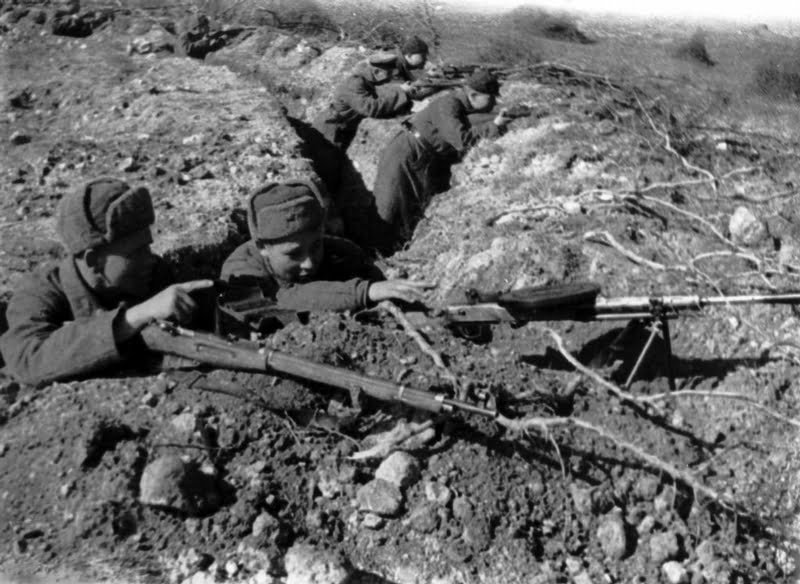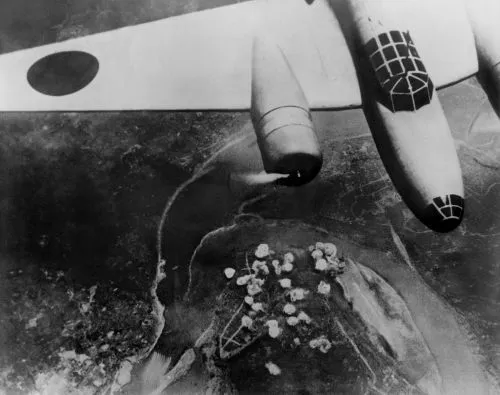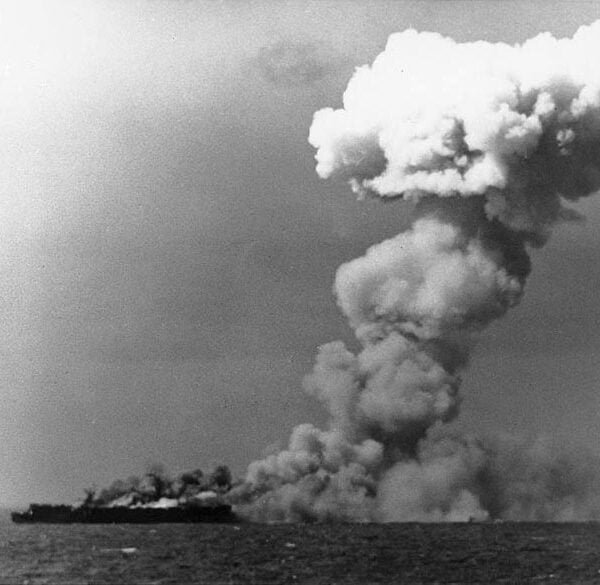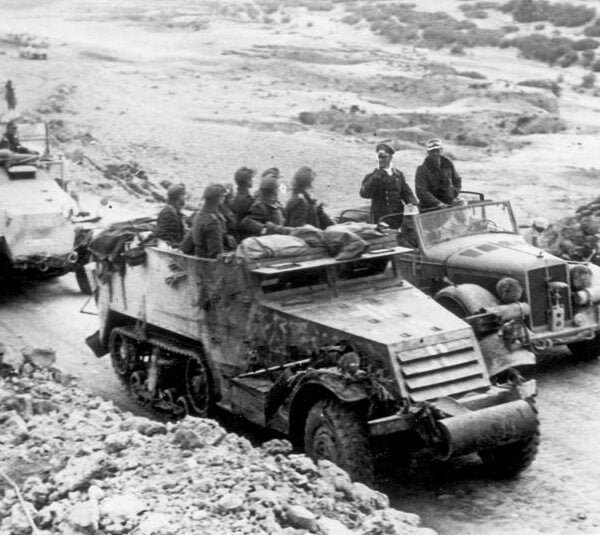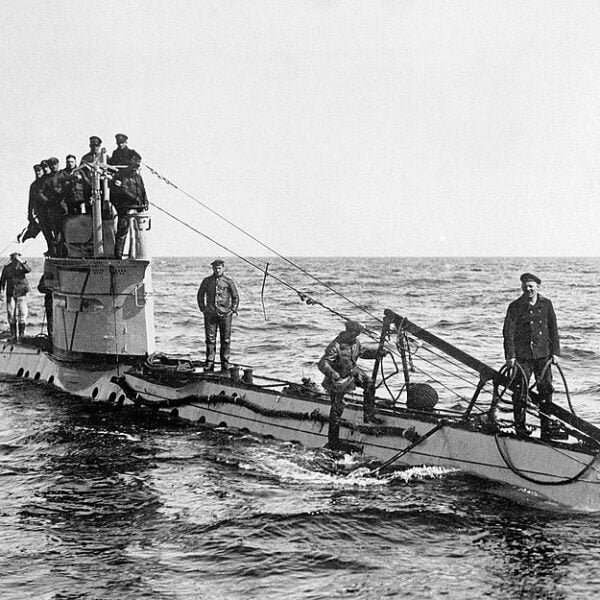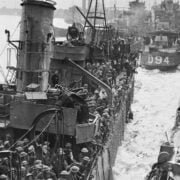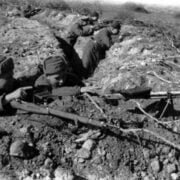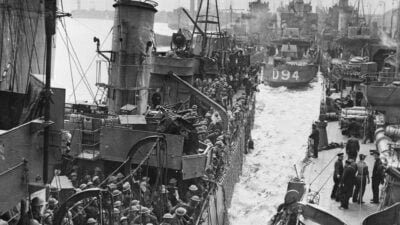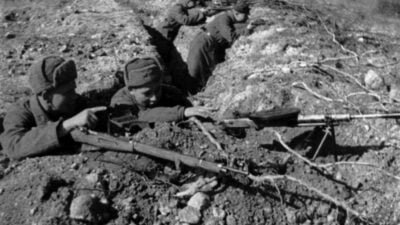Operation Dynamo, also known as the Dunkirk Evacuation, was one of the most remarkable and crucial operations of World War II. It took place between May 26 and June 4, 1940, when Allied forces were surrounded by German troops in the coastal town of Dunkirk in northern France.
Also check out: Unit 731: A Shadow in Japanese History
The Rise of Hitler and the Battle of France
To fully understand the importance and urgency of the operation, it is crucial to examine the historical context that led to this miraculous evacuation. World War II had already begun in September 1939 when Germany invaded Poland, prompting a response from the Allied powers, including the United Kingdom and France. However, the event that directly led to the evacuation of Dunkirk was the German Blitzkrieg and the subsequent Battle of France.
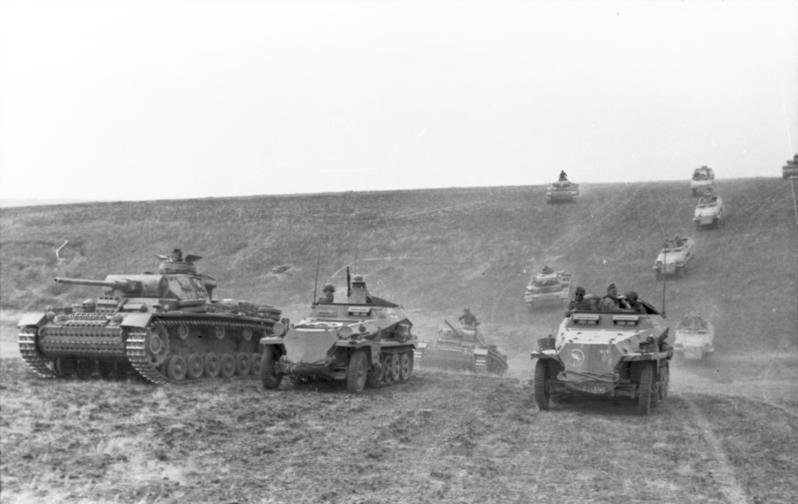

Rise of Adolf Hitler
Adolf Hitler’s rise to power in Germany in 1933 played a crucial role in this context. The Nazi leader was determined to expand German territory and establish Aryan hegemony in Europe. This led to a series of territorial aggressions and annexations, such as the occupation of the Rhineland in 1936, the Anschluss with Austria in 1938, and the annexation of the Sudetenland from Czechoslovakia in the same year. The inability of the Allied powers to contain German aggression allowed Hitler to continue his expansion.
Blitzkrieg and the Battle of France
In May 1940, German forces launched the Blitzkrieg, or “lightning war,” an innovative military tactic that combined infantry, tanks, artillery, and air force in rapid and coordinated attacks. This strategy allowed German forces to overcome French and British defenses, advancing quickly through Belgium and France.
The Battle of France began on May 10, 1940, and unfolded rapidly and devastatingly. German forces surrounded and isolated Allied troops in the Dunkirk region, pushing them toward the English Channel. The fall of France was imminent, and the situation for British and French forces was desperate.
The Miraculous Evacuation at Dunkirk
The evacuation of Dunkirk, also known as Operation Dynamo, was a rescue operation of monumental proportions that took place between May 26 and June 4, 1940. It was executed under extremely challenging circumstances and involved a series of remarkable elements that made it one of the most notable feats of World War II.
Complex Coordination for Operation Dynamo
The operation involved complex coordination among Allied forces, civilian vessels, the British Expeditionary Force (BEF), and the Royal Navy. Admiral Bertram Ramsay was tasked with organizing and overseeing the evacuation, while Vice-Admiral William Tennant led the operation on the ground. Cooperation between military and civilian entities, including collaboration with fishermen and private boat owners, was essential to the success of the evacuation.
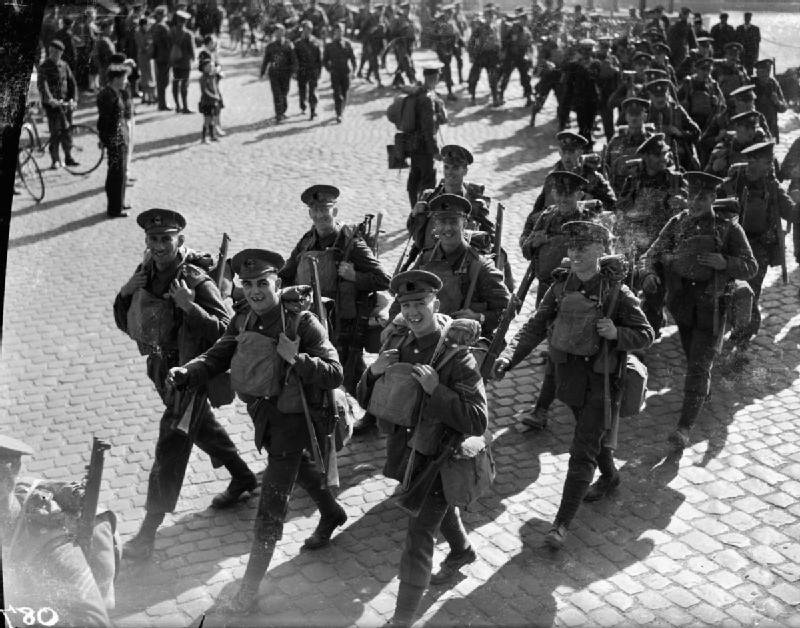

The Crucial Role of Private Boats in Operation Dynamo
One of the most notable features of the Dunkirk evacuation was the involvement of private boats in the rescue. Hundreds of civilian vessels, including yachts, barges, and fishing boats, sailed from the entire south coast of England to Dunkirk. The civilians operating these boats took significant risks to rescue the trapped soldiers. This spirit of solidarity and courage demonstrated the determination of the British people to face adversity.
Resisting Aerial Attacks
During the evacuation, troops were subjected to constant air attacks by the German Luftwaffe. German planes launched regular bombings and air attacks on the vessels and troops on the beach. However, the British Royal Air Force (RAF) managed to provide air cover and protection to the evacuating vessels, reducing the damage caused by air attacks.
The Impressive Number of Evacuees
Over the nine days of the operation, more than 330,000 Allied soldiers were successfully rescued and taken back to Britain. This number included not only British soldiers but also French and other Allied nationalities. The success of the evacuation was a testament to the determination of the Allied forces to preserve their strength to continue the fight against the Axis Powers.
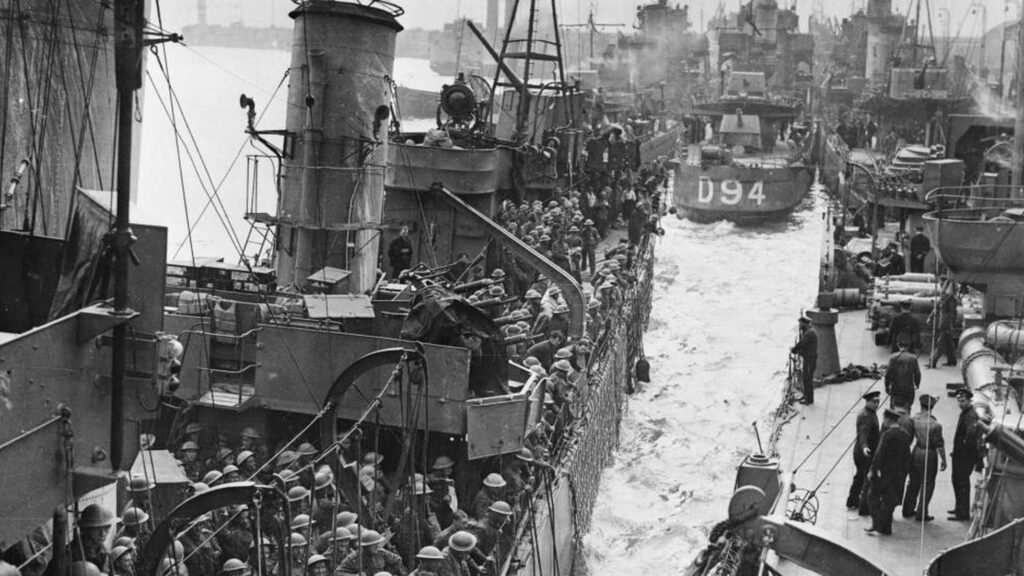

Civilian Involvement in Operation Dynamo
Civilian participation in the evacuation of Dunkirk played a crucial role in its success. Hundreds of civilians, including private boat owners, fishermen, and even untrained volunteers, joined the rescue efforts, demonstrating remarkable courage and determination in the face of danger.
Private Boat Owners
One of the most notable features of the Dunkirk evacuation was the mobilization of private boat owners along the south coast of England. They sailed their yachts, barges, and fishing boats toward Dunkirk, even knowing the imminent dangers. Many of them faced air and artillery attacks during the Channel crossing.
These brave civilians played a critical role in transporting soldiers from the beaches of Dunkirk to the rescue ships. Their determination and altruism allowed the saving of a large number of Allied soldiers trapped by German forces.
The Spirit of Solidarity
Civilian participation in the operation reflected a spirit of solidarity and unity in a time of crisis. The British people came together in a show of support for their trapped troops and allies. Many civilians volunteered to help, offering their boats, navigation skills, and courage. This solidarity transcended social and economic divisions, uniting the people in a joint effort to rescue their compatriots.
Risks and Sacrifices
Civilians who ventured toward the beaches of Dunkirk faced significant risks. In addition to Luftwaffe air attacks, they were also subjected to enemy artillery. Many lost their lives or their boats during the rescue operation. However, the sacrifice of these civilians demonstrated a deep commitment to the cause and a willingness to face extreme challenges to help their compatriots.
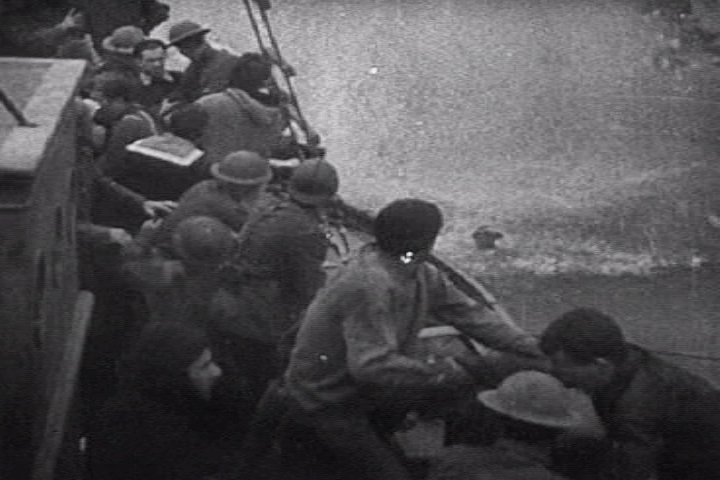

The Massive Rescue of Dunkirk in Operation Dynamo
Operation Dynamo is marked by impressive numbers that highlight the epic scale of this rescue operation during World War II. The numbers not only illustrate the magnitude of the operation but also emphasize the determination and joint effort of the Allied forces to save their trapped troops.
Over 330,000 Evacuees
During the nine days, a total of 338,226 Allied soldiers were rescued from the beaches of Dunkirk and safely evacuated. This number included not only British soldiers but also troops from France and other Allied nations. The magnitude of this evacuation makes it one of the largest in military history.
933 Boats Involved
The evacuation involved an impressive variety of vessels. A total of 933 boats, including warships, barges, tugs, ferries, fishing boats, and yachts, were used to transport troops from the beach to the rescue ships. The diversity of vessels reflects the massive mobilization of resources for the operation.
700 Civilian Boats
Among the 933 boats involved, about 700 were civilian vessels operated by untrained volunteers. Private boat owners, fishermen, and other civilians joined the rescue effort, sailing through the treacherous waters of the English Channel to save their trapped troops. These anonymous heroes played a vital role in the operation.
40,000 Men Lost
Despite the success, there were still significant losses. About 40,000 Allied soldiers were captured or killed during the Battle of Dunkirk and the subsequent evacuation. However, the number of rescued far exceeded the losses, and the evacuation was considered a strategic success.
26.5 Nautical Miles
The distance between Dunkirk and the English coast is approximately 26.5 nautical miles (about 31 land miles). In this short space, one of the greatest rescue operations in history took place, with hundreds of thousands of soldiers being evacuated in a relatively confined area.
The Lessons and Legacies of Operation Dynamo
The operation not only had an immediate impact on World War II but also left a lasting legacy that influenced military strategies, international policies, and the perception of war.
The Lesson of the Need for Advance Planning
One of the most important lessons was the need for advance planning and considering evacuation scenarios in military operations. The evacuation of Dunkirk highlighted the risks of not having adequate contingency plans for troop withdrawal in the event of defeat. This led many military leaders to reassess their strategies and to consider evacuation as an integral part of war planning.
International Cooperation as a Key Factor
It also emphasized the importance of international cooperation in times of crisis. The operation involved not only British forces but also French and Belgian troops, as well as the support of naval units from various allied nations. This international collaboration played a crucial role in rescuing the troops and served as an example for future military alliances.
A Symbol of Resistance
The evacuation of Dunkirk became a symbol of resistance and determination in the face of adversity. The spirit of not surrendering, even in the face of apparent defeat, inspired not only the Allied forces but also the general public. The evacuation provided hope that the war could be won, even in dark times.
Impact on the Psychology of War
Operation Dynamo also had a profound impact on the psychology of war. The successful evacuation of Dunkirk provided a confidence boost to the Allied forces, showing that defeat did not necessarily mean complete collapse. This new sense of determination and resilience influenced how the Allied forces faced challenges as the war continued.
A Reminder of Sacrifice and Heroism from Operation Dynamo
This event is remembered as an example of sacrifice and heroism. Both the soldiers who defended the beaches and the civilians who ventured into danger to rescue them are honored for their roles in the operation. Their heroic acts serve as a lasting reminder of human potential to act courageously in times of crisis.
Operation Dynamo, with its monumental evacuation and lasting influence, remains a significant event in the history of World War II. It taught valuable lessons about planning, international cooperation, and resilience, while inspiring later generations to face seemingly insurmountable challenges with courage and determination.

